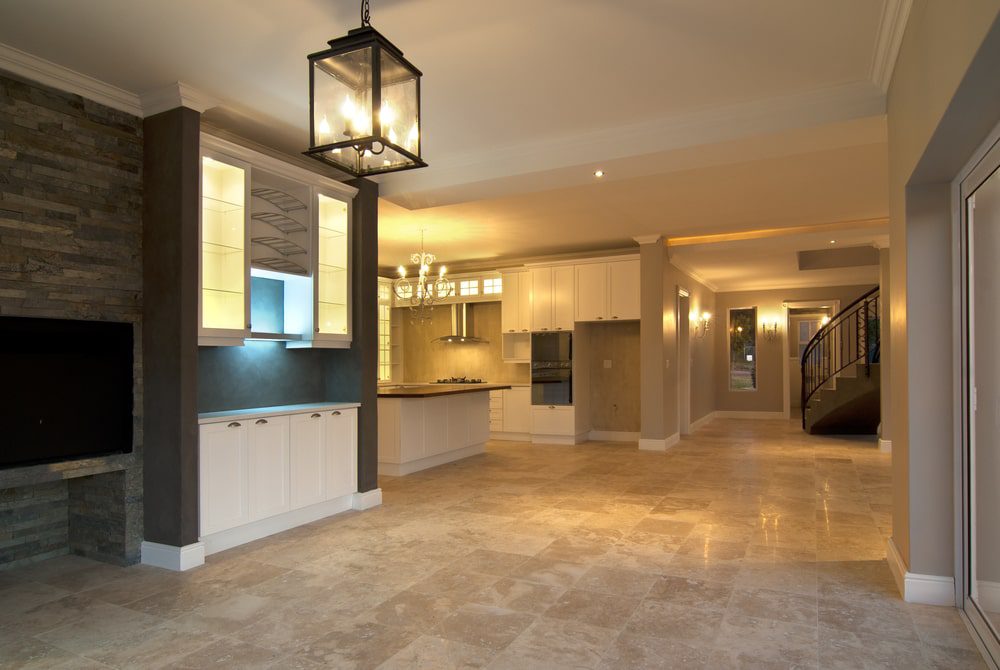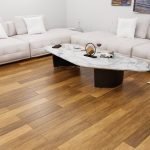Hidden Fees in the Cost of Tile Flooring and Installation
When you’re budgeting for a new tile, the line item most people plan for is materials plus labor. But the true cost of tile flooring and installation can creep up fast once prep, transitions, demo, and post-install finishing are added. This guide breaks down the common (and not-so-common) add-ons so you can compare quotes fairly, plan realistically, and avoid surprises.
Contents
- 1 What’s Typically Included vs. Extra Charges
- 2 Demolition, Disposal & Site Protection
- 3 Subfloor Repair, Underlayment & Leveling
- 4 Waterproofing & Crack Isolation
- 5 Layout Complexity, Tile Type & Pattern Upcharges
- 6 Trim, Transitions & Finishing Details
- 7 Grout Choices, Sealers & Expansion Joints
- 8 Plumbing, Appliances & Baseboards
- 9 Permits, HOA Rules & Access Constraints
- 10 Payment Terms, Financing & Warranty Fine Print
- 11 FAQs
- 12 Conclusion
What’s Typically Included vs. Extra Charges
Before you sign, clarify exactly what a “standard install” covers. Many quotes headline a low rate, then exclude critical steps that affect the final cost of tile flooring and installation.
Base Scope in a Standard Quote
Most baseline proposals include layout, thinset, setting tile, basic grout, and a simple cleanup. Nice—but incomplete. If your home needs subfloor work, specialty trims, or leveling, expect add-ons that raise the cost of tile flooring and installation beyond the headline number.
Where Hidden Costs Usually Live
Look closely for demo, haul-away, surface prep, crack isolation, waterproofing, transitions, and baseboards. Each line may be “small,” but together they materially change the cost of tile flooring and installation.
Demolition, Disposal & Site Protection
Tear-out is messy, heavy, and not always included. Omitting it up front can distort the cost of tile flooring and installation.
Old Floor Removal & Adhesive Scrape
Removing glued vinyl, stubborn thinset, or mud beds takes extra labor and equipment. If demo isn’t included, add both time and dumpster fees to the cost of tile flooring and installation.
Dust Control, Containment & Haul-Away
Floor protection, plastic sheathing, negative air, and debris transport all add line items. These protective measures safeguard your home but also affect the final cost of tile flooring and installation.
Subfloor Repair, Underlayment & Leveling
Tile wants flat, stable substrates. If your foundation isn’t ready, the cost of tile flooring and installation will reflect the fix.
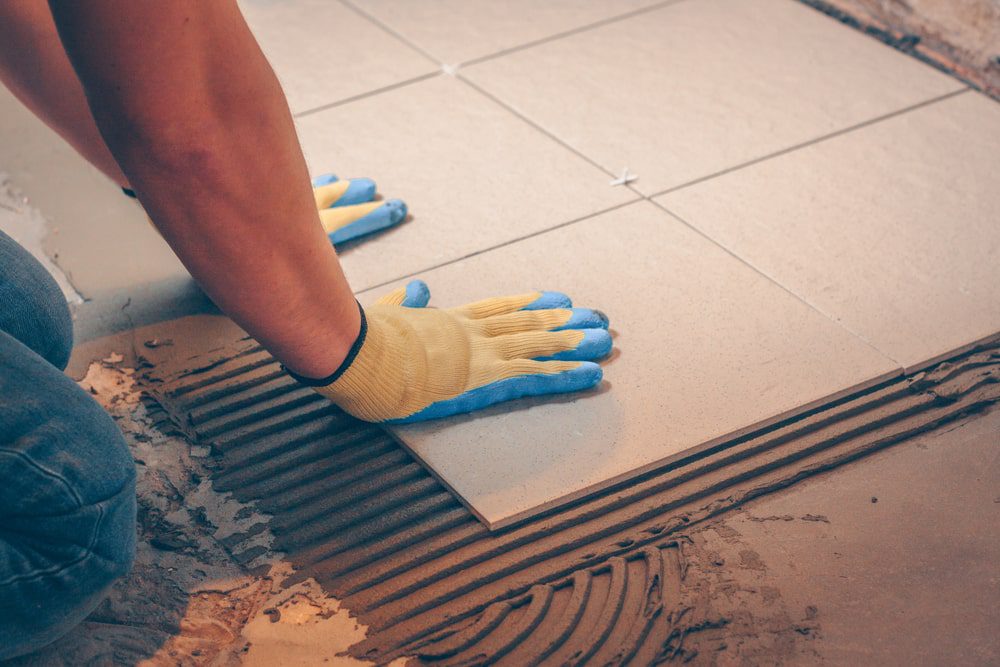
Plywood, Backer Board, or Uncoupling Membranes
Cement board, fiber-cement, or uncoupling (e.g., membranes) minimize movement and cracks. Material + labor can meaningfully change the cost of tile flooring and installation—but skipping them can cost more later.
Self-Leveling Compounds (SLC)
Even a 1/4″ variance can telegraph through tile. SLC materials are pricey, and pour prep is meticulous—another realistic add to the cost of tile flooring and installation.
Waterproofing & Crack Isolation
Wet zones and slab cracks demand protection you may not see in “basic” quotes, yet they protect your long-term cost of tile flooring and installation investment.
Surface Waterproofing (Showers, Baths, Laundry)
Liquid membranes, sheet membranes, and properly detailed seams add materials and labor—crucial for performance and for avoiding future tear-outs that dwarf the original cost of tile flooring and installation.
Crack Isolation on Concrete Slabs
Hairline slab cracks will mirror in grout or tile. Isolation mats or liquids cost extra now, but reduce failure risk—ultimately protecting the total cost of tile flooring and installation.
Layout Complexity, Tile Type & Pattern Upcharges
Not all tiles set the same. Certain materials and patterns increase the real cost of tile flooring and installation.
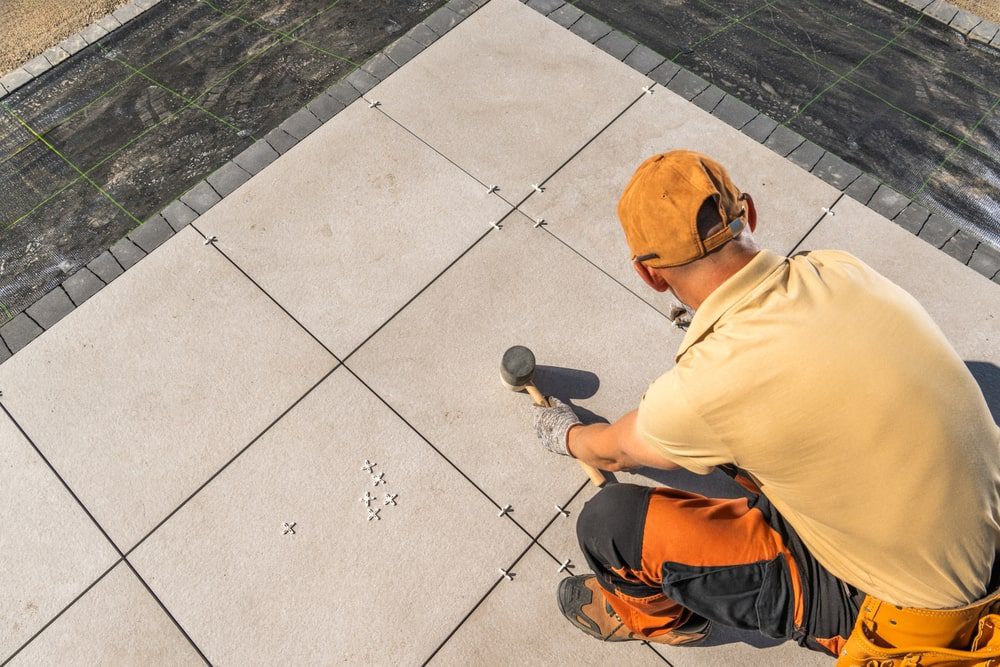
Large-Format, Natural Stone & Specialty Materials
Stone, rectified porcelain, mosaics, and glass demand tighter tolerances, premium blades, and extra handling—adding to the cost of tile flooring and installation due to slower set times and more lippage control.
Herringbone, Diagonals & Inlays
Patterned layouts require more cuts, waste, and layout time. Expect a pattern premium in the cost of tile flooring and installation—worth it for the design impact.
Trim, Transitions & Finishing Details
Beautiful edges aren’t “free.” Finishing details often sit outside the basic cost of tile flooring and installation.
Metal Profiles, Bullnose & Schluter-Style Trims
Profile pieces, stair nosings, and fabricated bullnose cost extra to source and install—essential to a polished look and part of the true cost of tile flooring and installation.
Door Undercuts, Thresholds & Reducers
Transitioning to hardwood, carpet, or vinyl involves reducers and undercuts. Each opening can add a small charge that adds up to the cost of tile flooring and installation.
Grout Choices, Sealers & Expansion Joints
Grout isn’t “one price fits all.” Upgrades enhance durability—and adjust the cost of tile flooring and installation.
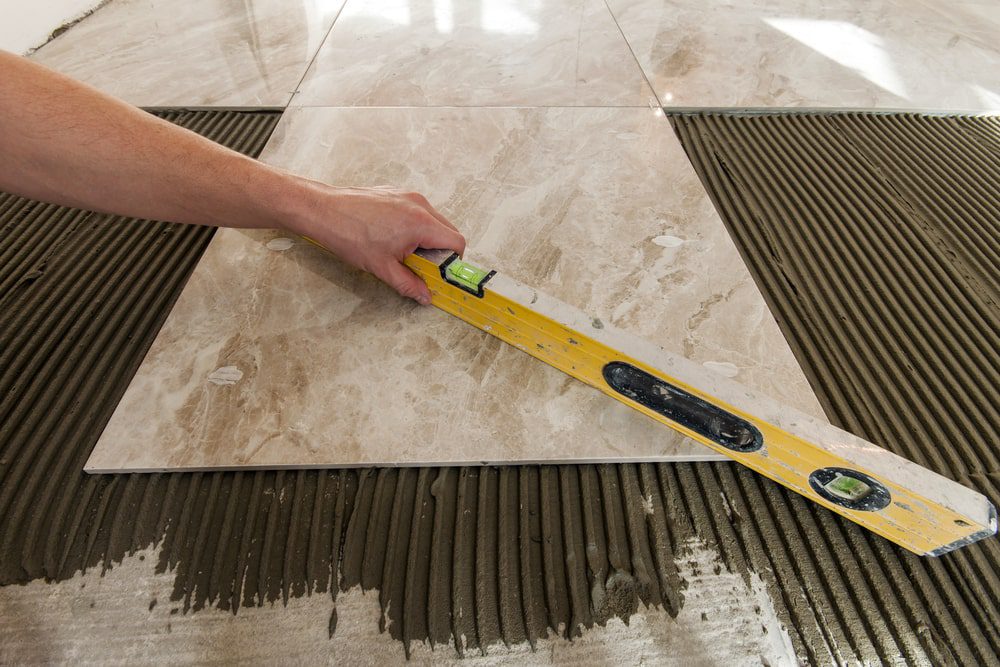
Epoxy or High-Performance Grout
Stain-resistant, low-maintenance epoxies take more skill and time, increasing labor and materials in the cost of tile flooring and installation but saving on long-term maintenance.
Penetrating Sealers & Soft Joints
Natural stone sealing and perimeter movement joints are best practice. They’re modest line items that protect the total cost of tile flooring and installation over time.
Plumbing, Appliances & Baseboards
Trades coordination often falls outside tile labor, yet affects the total cost of tile flooring and installation.
Toilet R&R, Appliance Moves & Toe-Kick Cuts
Temporary removal and re-set of toilets, ranges, or fridges is rarely free. Budget these logistics into the cost of tile flooring and installation to prevent last-minute change orders.
Base & Shoe Molding, Caulk & Paint Touch-Ups
Reinstalling or replacing baseboards, plus caulking/painting, are small but common adds to the cost of tile flooring and installation.
Permits, HOA Rules & Access Constraints
Red tape and logistics can quietly inflate the cost of tile flooring and installation.
Permitting & Inspections
Some municipalities require permits for wet-area renos. Permit fees and inspection windows can extend timelines and adjust the cost of tile flooring and installation.
Elevators, Parking & Delivery Restrictions
High-rises and gated communities may require COI paperwork, reserved elevators, or timed deliveries—all of which can add to the cost of tile flooring and installation via extra labor coordination.
Payment Terms, Financing & Warranty Fine Print
How you pay and what’s covered is part of the real cost of tile flooring and installation.
Deposits, Progress Payments & Credit Fees
Card surcharges, financing charges, and rigid draw schedules can influence your total cost of tile flooring and installation. Clarify terms early.
Material & Labor Warranty Scope
Understand what’s covered (membranes, grout, setting materials) and for how long. Voided warranties can become the biggest “hidden fee” in the cost of tile flooring and installation.
FAQs
Why do tile quotes vary so much?
Scope, prep, and finish details differ. Ensure each bid lists demo, leveling, membranes, trims, and transitions so the cost of tile flooring and installation is apples-to-apples.
Can I skip leveling to save money?
You can—but lippage, cracks, or hollow spots can cost far more later, raising the lifetime cost of tile flooring and installation.
Is epoxy grout worth the upcharge?
For kitchens, baths, and mudrooms: yes. It lowers maintenance and protects the long-term cost of tile flooring and installation.
Do I need waterproofing outside the shower?
Laundry rooms and bath floors benefit from waterproofing. It’s a small add that safeguards the overall cost of tile flooring and installation.
How can I prevent change orders?
Request a site visit, moisture tests, and substrate assessment. A detailed scope stabilizes the cost of tile flooring and installation.
Conclusion
No surprises. No shortcuts. At Unique Kitchen and Baths, we itemize every step—demo to trim—so you see the true cost of tile flooring and installation before work starts. Our designers and installers plan substrates, membranes, patterns, and finishes around your budget and lifestyle, delivering durable floors that look incredible and perform for years. Ready for a clear, detailed proposal? Schedule a free consultation today.
